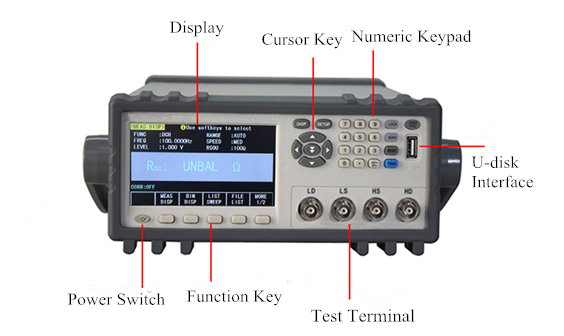How to Use LCR Meter Correctly?
Fri, Jan 22 by ATO.com
LCR meter is a special measuring instrument used to measure the characteristic parameters of electrical components. L is inductance, C is capacitance, and R is resistance. The LCR meter is a dedicated meter with high measurement accuracy. As a precision instrument, if the operation is not standardized, it is easy to damage the instrument and affect the accuracy of the measurement result. This article will summarize the common failures and precautions in the use of LCR meters to avoid failures, helping users to use the LCR meter correctly.
Common Failures of LCR Meter
- Power failure: The LCR meter cannot be turned on normally.
- Failure of the input terminal: Abnormal impedance, no signal, abnormal signal amplitude.
- Failure of test analysis: Abnormal frequency and phase test.
- Displayed failure: Broken screen, black screen.
- Key failure: The key does not respond, the adjustment knob does not respond.
- Interface failure: The storage medium cannot be identified, and the control system cannot be connected.
- Other usage problems.
How to avoid failure of LCR meter correctly?
- Ensure correct grounding of LCR meter
- Be sure to use the three-phase AC power cord that comes with the LCR meter.
- Proper grounding can prevent the generation of static electricity harmful to the LCR meter and the operator.
- Do not use lead wires, power cords or autotransformers without protective grounding conductors, otherwise the grounding protection will fail.
- Before use the LCR meter, be sure to check the quality and polarity of the AC power source. In general, the voltage used by the LCR meter is 100V, 120V, 220V (error ±10%) or 240V (error +5%/-10%). The typical grounding resistance value is <1Ω, and the voltage between the neutral line and the ground line is <1V. If necessary, it may be necessary to configure an uninterruptible power supply [UPS].

- Precautions of LCR meter
- Power source.
To ensure the safety of the instrument, before connecting the power supply to the LCR meter, it is required to confirm whether the power supply of the LCR meter is AC 220V or AC 110V. Because the power interface of most instruments can be selected between AC 220V (AC 240V) and AC 110V (AC 110V), if you plug in the wrong power supply carelessly, the fuse will be blown out, and the LCR meter will be burned out in the worst case. If the fuse is burned out, the nominal power value of the replaced fuse cannot exceed the current value indicated on the LCR meter, otherwise the fuse will not work after the wrong power supply is connected, causing the LCR meter to be burned out. - Preheat
After the LCR meter is powered on, the display should show. For LCR meters with self-check function, they should be warmed up for 10 minutes after passing the self-check, or they need to be warmed up for the time specified in the manual before starting to use. - Wiring
Generally, the measurement section of the LCR meter has 5 interfaces: HD (high current), HS (high voltage), LS (low voltage), LD (low current), and GND (ground). Each test terminal has a shielding layer connected to the chassis. The cable length used for measurement should be as short as possible, and shielded cables are ideal.
- Inspection of the temperature and humidity
- Be sure to store the LCR meter in a clean and dry environment. The typical best working temperature is 23℃ to 25℃, and the ambient temperature should not exceed 35℃.
- The cooling holes and cooling fans should be checked frequently and cleaned in time.
- It is necessary to keep the working environment clean, because dust may cause damage to the LCR meter due to static electricity, and the dust accumulated on the fan may sometimes cause the LCR meter to fail to start.
- Connect the LCR meter and bias current source correctly, and observe the operation regulations
- Do not apply DC voltage or current to unknown terminals, otherwise the LCR meter will be damaged.
- Before measuring capacitance, it must be ensured that the capacitance is free of charge.
- Before connecting or disconnecting the device under test and the LCR meter, the power must be turned off.
- Do not place the device under test outside the fixture for testing.
- Be sure to output or turn off the bias current through the DC Bias button on the front panel of the LCR meter. Do not disconnect the current by replacing the device under test or the cable.
- Before replacing the device under test or disconnecting the bias power supply from the LCR meter, it is required to turn off the bias current.
- Please do not turn off the LCR meter or the bias power supply before turning off the bias current.
- Appropriate test fixtures and compensation should be used to achieve accurate measurements. It is recommended to clean the unknown terminal and test fixture of the LCR meter regularly to ensure the best measurement accuracy.
- Please do not remove the memory card while loading or saving data. The memory card should be placed in the memory card box to prevent contamination and ESD.

